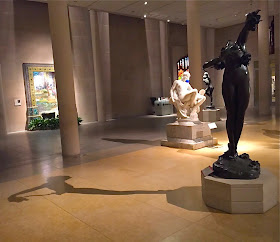Just another day at the office. Jackie the Lion recording his roar.
Throw up some soundproofing around the cage, bring in some technicians, get your star to face the microphone, and presto, you're ready to record your studio's mascot who, by the way, just happens to be a lion.
When it comes to studio logos one of the most iconic belongs to MGM. Featuring a Latin motto, "Ars Gratia Artis" (Art for Art’s Sake), and a lion who roars, it’s a familiar site to moviegoers. The idea for the logo was originally conceived of by studio publicist Howard Dietz for Goldwyn Pictures and then later modified for MGM in 1924; he is said to have chosen a lion in honour of the mascot of his alma mater, Columbia University.
Although always referred to as Leo, there were actually five different lions over the years including Jackie (pictured above) who has the distinction of being the first MGM mascot to have his voice recorded.
Born around 1915, Jackie was destined to be in show business; both his mother and grandmother had been performers. After acting in a series of jungle films, he was chosen to replace MGM’s first lion, Slats, who was the only MGM lion not to roar (he simply looked around instead).
In 1928, Jackie would enter film history when MGM released White Shadows in the South Seas, their first “sound” film featuring a synchronized music track and sound effects including Jackie’s roar in the opening credits.
The photo of the recording session implies that Jackie was well trained; it was said that he was very gentle and even once took care of some kittens who had wandered into his cage (true story or studio legend?). After this, Jackie would be used for all MGM black and white films until 1956. The two exceptions were when he appeared in Babes in Toyland (1934) and The Wizard of Oz (1939).
The photo of the recording session implies that Jackie was well trained; it was said that he was very gentle and even once took care of some kittens who had wandered into his cage (true story or studio legend?). After this, Jackie would be used for all MGM black and white films until 1956. The two exceptions were when he appeared in Babes in Toyland (1934) and The Wizard of Oz (1939).
Jackie was a true cat with nine lives. During his tenure at MGM, he survived a series of incidents including an earthquake, two train wrecks, a sinking boat, an explosion, and a plane crash, the last of which resulted in Jackie being left in the Arizona desert (reportedly with supplies—sandwiches and milk) while the pilot went for help. These near escapes earned him the nickname “Leo the Lucky.”
Jackie retired from filmmaking in 1931, spending his remaining years at the Philadelphia Zoo where he passed away on February 26, 1935 from heart problems. Although he may be gone, his face and voice lives on in numerous MGM classics.













